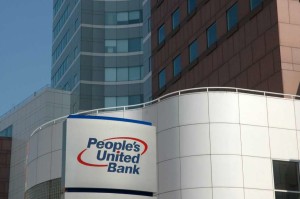People’s United Financial’s $544 million purchase of the parent company of Farmington Bank is one of this year’s largest bank deals in the U.S. But it may not be the last.
With a much more favorable regulatory environment now that the Dodd-Frank relief package has passed and evidence suggesting that the 10-year economic expansion might come to an end within the next few years, smaller banks that have not performed as well may start to raise their hands.
“There will continue to be a steady stream of institutions considering sale,” said Arthur Loomis, president of Loomis & Co., a New York-based investment bank that has worked extensively with community banks in the Northeast on mergers and acquisitions and capital financings. “What is interesting is the dynamic of the high-performing banks versus the average-performing or the less-than-average performing banks.”
High-performing community banks interested in selling are likely to hold off right now, said Loomis, because they still have room to grow and benefits to claim from expected interest rate increases, as well as recent policy changes such as tax and regulatory reform.
These benefits could get them a better deal later on, especially where the consideration is an exchange of common stock shares where waiting could yield a better exchange ratio, he said.
“Three to 5 percent of community banks always sell each year,” said Loomis. “The question is which ones will they be?”
The Perfect Example
Farmington Bank was an ideal candidate for an acquisition. The bank has nearly doubled in size since going public in 2011, growing from roughly $1.6 billion in assets at the end of 2011 to about $3.1 billion in assets at the end of the first quarter of 2018, according to the FDIC.
But otherwise, the bank’s performance has been about average, said Loomis.
The bank’s return on assets never exceeded 60 basis points when most bankers consider 90 or 100 basis points as the average these days, and its efficiency ratio didn’t drop below 70 until 2017.
Also, Farmington parent’s stock price, which opened at just over $11 in 2011, was about $26 just a day or two before the acquisition was announced. While that is more than double than what it started at, Loomis said many banks in the 1990s and today are seeing higher returns on their investments.
In fact, Loomis said one of his clients was approached and considered purchasing Farmington Bank, but ultimately passed on the deal, based on concerns about the state of Connecticut’s precarious financial outlook and Farmington’s operating performance.
The deal is attractive because People’s United is headquartered in Connecticut and potentially has the ability to achieve 50 percent in pre-tax cost savings on Farmington Bank’s projected 2019 expenses, Loomis surmised.
The other issue is that growth prospects are not as fruitful as they once were.
“It’s tougher for banks the size of Farmington to compete right now,” said Jared Shaw, managing director and senior analyst at Wells Fargo Securities. “Their growth came from commercial real estate, but spreads have been very tight.”
Growing core deposits has been another issue for the company.
Farmington Bank executives mentioned in one of their recent earnings calls that they had been dealing with deposit pressure. The cost of interest-bearing liabilities had increased to 97 basis points in the first quarter of 2018, up from 76 basis points in the prior year quarter.
Regulation Relief
The other major factor that may have just turned 2018 from a slow bank M&A year into one with more deals is the much friendlier regulatory landscape. This can be seen not only from a change in the actual laws, but also from a change in the relationship between bankers and regulators.
“Under the Obama administration, banks were treated with more of an adversarial relationship. Coming out of crisis, there was the feeling that banks needed to be punished,” said Shaw. “Banks had to hold more capital. … From speaking with management teams, it was more likely they (regulators) were going to find something wrong and punish you for it.”
In addition, said Shaw, banks during the Obama administration were updating Bank Secrecy Act and Anti-Money Laundering systems. Many regulators wanted the banks to finish these updates before making an acquisition or doing a merger, he said.
Most recently, lawmakers passed the Dodd-Frank relief package, which raised the asset threshold of systemically important financial institutions from $50 billion to $250 billion.
For People’s United, at $44 billion in assets, the bank very possibly could have been holding off on an acquisition to avoid any extra regulatory burden that would have undoubtedly come as the bank got closer to the $50 billion threshold.
Now, with the threshold raised, People’s United CEO Jack Barnes on a conference call following the acquisition of Farmington did not rule out doing another acquisition sometime soon.
“People’s could do another deal,” said Shaw. “They have capital and there are a few more opportunities in Metro New York, Eastern Massachusetts or Southern New England for them.”




 |
| 


